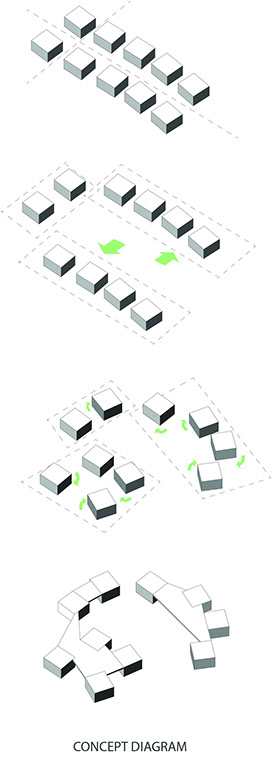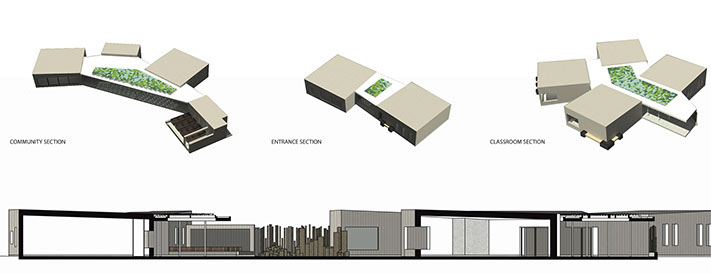The school is integrated into the refugee camp by redefining the original grid of the camp. Each module is derived from the tent as an architectural form. However, a public sharing space is created to enhance the idea of community. Using different configurations, sharing spaces are designed for different purposes. The school is designed in a way to feel both familiar and new to the refugee students. One module only serves one function, which is how the tent works in the camp. Once they step outside of a module, they are standing in a space that is not enclosed: this is familiar to them. On the other hand, the different orientation of each module creates a special and interesting visual effect for children, as the view changes inexpertly as they move. This introduces a novel element, contrasting with the rigid linearity of the camp.




At McGill University School of Architecture